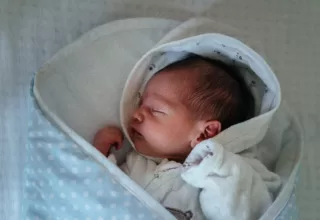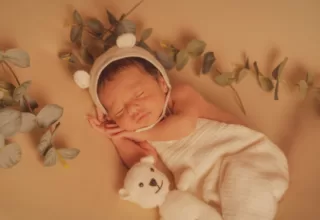Safe Sleep Guidelines for Babies
Ensuring that babies get a safe and sound sleep is crucial for their overall health and well-being. As a parent or caregiver, it’s essential to understand and follow safe sleep guidelines to reduce the risk of Sudden Infant Death Syndrome (SIDS) and other sleep-related accidents. In this article, we will explore the best practices and guidelines for creating a safe sleep environment for babies, promoting healthy sleep routines, and addressing common concerns.
Introduction
Babies spend a significant amount of time sleeping, and providing them with a safe sleep environment is vital for their development. Safe sleep practices help reduce the risk of SIDS, suffocation, and other sleep-related incidents. By following the guidelines outlined in this article, you can create a secure and comfortable sleeping environment for your baby.
Importance of Safe Sleep for Babies
Safe sleep plays a critical role in reducing the risk of SIDS, which is the leading cause of death for infants between one month and one year of age. Following safe sleep guidelines not only provides a safer environment but also promotes healthy sleep patterns and encourages better overall growth and development.
Creating a Safe Sleep Environment
Choosing the Right Crib
When selecting a crib for your baby, ensure that it meets the safety standards set by organizations such as the Consumer Product Safety Commission (CPSC) or the American Society for Testing and Materials (ASTM). Look for cribs with slats that are spaced appropriately to prevent entrapment and make sure the crib is sturdy and in good condition.
Using a Firm Mattress and Fitted Sheet
Place your baby on a firm mattress that fits snugly within the crib. Avoid using additional padding, such as foam or pillows, which can increase the risk of suffocation. Use a fitted sheet designed specifically for the crib mattress to prevent it from coming loose during sleep.
Avoiding Loose Bedding and Soft Objects
Keep the crib free from loose bedding, such as blankets, pillows, and stuffed animals. These items can pose suffocation hazards to your baby. Instead, dress your baby in a sleep sack or wearable blanket to keep them warm without the need for loose bedding.
Ensuring Proper Room Temperature
Maintaining a comfortable room temperature is essential for your baby’s sleep. Keep the room cool, between 68-72°F (20-22°C), to prevent overheating. Use a room thermometer to monitor the temperature and dress your baby appropriately for the conditions. Avoid placing your baby’s crib near drafty windows or direct heat sources.
Positioning the Baby for Sleep
Back to Sleep
The safest sleep position for babies is on their back. Always place your baby on their back for sleep, whether it’s naptime or bedtime. This position reduces the risk of SIDS significantly. Avoid placing your baby on their stomach or side for sleep.
Avoiding Co-Sleeping
While it is tempting to bring your baby into your bed for sleep, it is important to note that co-sleeping increases the risk of suffocation and SIDS. Instead, provide a separate sleep space for your baby, such as a bassinet or crib, in your room. This practice, known as room-sharing, allows you to be close to your baby while ensuring their safety.
Swaddling Safely
Swaddling can provide comfort to newborns and help them sleep better. However, it’s essential to swaddle your baby safely to avoid any risks. Use lightweight and breathable blankets or specially designed swaddles with secure fasteners. Make sure the swaddle is not too tight and allows room for your baby’s hips to move freely.
Transitioning out of Swaddling
As your baby grows and develops, they will reach a point where swaddling is no longer safe or comfortable for them. Look for signs of readiness to transition out of swaddling, such as rolling over. Transition to sleep sacks or wearable blankets that allow freedom of movement while providing a sense of security.
Promoting a Safe Sleep Routine
Establishing a consistent and soothing bedtime routine can help signal to your baby that it’s time to sleep. Here are some tips for creating a safe sleep routine:
Establishing Consistent Bedtime Rituals
Create a calming routine that includes activities like a warm bath, gentle massage, soft music, or reading a book. Consistency is key, so aim for the same sequence of activities each night to help your baby wind down and prepare for sleep.
Encouraging Daytime Naps
Naps are essential for babies’ growth and development. Ensure that your baby gets adequate daytime sleep by providing a quiet and dimly lit environment. Follow safe sleep practices even during naptime, such as placing your baby on their back to sleep and avoiding loose bedding.
Creating a Calm and Comfortable Environment
Design the sleep environment to be conducive to relaxation. Use soft lighting, white noise machines, or gentle lullabies to create a soothing atmosphere. Ensure that the room is dark enough for sleep by using blackout curtains or blinds.
Safe Sleep Guidelines for Different Age Groups
Safe sleep practices vary depending on the age of your baby. Here are some guidelines for different age groups:
Newborns (0-3 months)
Newborns should always sleep on their back, on a firm and flat surface. Avoid bed-sharing and ensure that their sleep space is free from hazards such as loose bedding and pillows. Dress them in appropriate sleepwear to maintain a comfortable body temperature.
Infants (4-12 months)
By this age, babies may start rolling over independently. Continue placing them on their back to sleep, but allow them to find their preferred sleeping position. Ensure that the crib or sleep surface is still free from hazards and maintain a safe sleep environment. Introduce a lovey or a small comfort object if desired, but ensure it is safe and does not pose a suffocation risk.
Toddlers (1-3 years)
At this stage, your toddler may transition to a toddler bed or continue sleeping in a crib. Follow the same safe sleep guidelines as before, ensuring a firm mattress, no loose bedding, and a safe sleep environment. Keep the room free from hazards and continue to promote a consistent sleep routine.
Monitoring and Supervision during Sleep
While creating a safe sleep environment is crucial, it’s also important to monitor and supervise your baby during sleep. Here are some recommendations:
Using Baby Monitors
Baby monitors can provide peace of mind by allowing you to keep an eye and ear on your baby while they sleep. Choose a reliable monitor with video and audio capabilities to monitor your baby’s sleep patterns. However, remember that monitors are not a substitute for supervision.
Co-Sleeping Safety Precautions
If you choose to co-sleep with your baby, it’s essential to take extra safety precautions. Ensure that the bed is firm, without pillows or loose bedding that can pose a suffocation risk. Create a separate space for your baby using a bassinet or co-sleeper attachment to your bed, ensuring that there is no risk of rolling over or being trapped.
The Role of Caregivers
Whether it’s parents, grandparents, or other caregivers, it’s important to educate everyone involved in caring for your baby about safe sleep practices. Ensure that they understand the guidelines and follow them consistently to maintain a safe sleep environment wherever your baby sleeps.
Conclusion
Ensuring safe sleep guidelines for babies is crucial for their well-being and reduces the risk of sleep-related accidents. By creating a safe sleep environment, following recommended sleep positions, establishing consistent routines, and monitoring your baby’s sleep, you can promote healthy and safe sleep habits from an early age.
Remember to always prioritize the safety and comfort of your baby during sleep, and stay informed about the latest guidelines and recommendations from trusted sources.
FAQ
Q. Is it safe for babies to sleep on their side?
No, the safest sleep position for babies is on their back. Sleeping on the side can increase the risk of SIDS and is not recommended.
Q. What should I do if my baby rolls onto their stomach while sleeping?
If your baby can roll from back to tummy and tummy to back independently, you don’t need to continuously reposition them. However, always place them to sleep on their back initially.
Q. Can I use a sleep positioner or wedge?
No, it is not recommended to use sleep positioners or wedges as they can pose suffocation hazards. It’s best to create a safe sleep environment without additional devices.
Q. Are pacifiers recommended for safe sleep?
Pacifiers can be beneficial for safe sleep as they have been associated with a reduced risk of SIDS. However, it’s important not to force a pacifier if the baby doesn’t want it.
Q. What about room-sharing with the baby?
Room-sharing, where the baby sleeps in the same room as the parents, is recommended for the first six to twelve months. It promotes safe sleep practices and makes night time feeding and soothing easier.
How useful was this post?
Click on a star to rate it!
Average rating 5 / 5. Vote count: 2
No votes so far! Be the first to rate this post.




